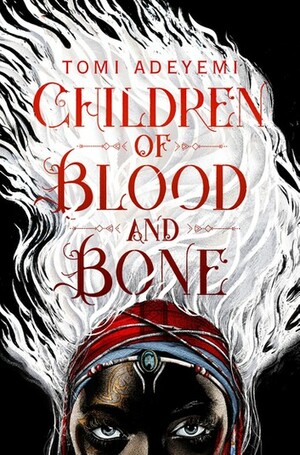Michael Gouker reviewed Children of Blood and Bone by Tomi Adeyemi (Legacy of Orïsha, #1)
Review of 'Children of Blood and Bone' on 'Goodreads'
4 stars
An important story written from a vantage point above a landscape of suffering and tears. Adeyemi does an excellent job with setting, painting a colorful mosaic rich in magical realism but grounded in pain and tragedy. I especially found compelling her use of West African religious motifs and language, much of which I recognized from my studies of Brazilian culture and its African roots.
Adeyemi uses 3rd person limited to great effect, allowing us to see the conflict of Orïsha-- essentially a violent suppression of the Divîners (a now-oppressed class who once practiced magic given by the gods) by the Kosidan, which are muggly-types--from three different angles. The first pov belongs to Zélie, an adolescent whose mother was a great Magi before King Saran crushed the power of the Divîners. She is the main protagonist and though a great warrior and able to draw from a deep well of magical power, her flaws and failures often dictate her actions. Her uncertainty and fear, both very realistic character features, are offset by an impulsive nature that so defies reason, that--given her age--lends even more belief. Her journey is a horror story that I could never do justice to. I have seen many ask if this is young adult fiction, if it is appropriate for children... It is, even with these horrors, because we as a society need to own them to move forward both as a people and as ourselves. Zélie's motivation is often pure survival, but the greatest depredations she suffers (and they are horrid) are merely magnifications of the daily experiences of real people. That's the story beneath this story, the one Adeyemi is telling us to great effect.
The other two povs are from the Kosidan oppressor class. One is Princess Amari, Saran's daughter, isolated from the world but with an endearing streak of devotion. She is the accidental iconoclast, spurred to rebellion by the death of her favorite slave. To me she represented a path of hope and sincerity, one of possibilities, but her journey is also fraught with pain. She bears the scars of an upbringing that sharpens her into a transformative weapon that is fell enough to effect change. I was cheering throughout the story to have Zélie and Amari realize they were made for each other and still remain hopeful despite the evidence to the contrary. Honestly, I felt deep frustration as the traditional relationships were plumbed instead. I get that it's a coming of age story, but really... Really? Really really? These budding relationships felt a little cringeworthy and forced.
Which leads me to the third pov, Amari's brother Inan, Saran's tool, who leads a conflicted life of self-hatred combined with bigotry and ignorance. He is the perfect villain and also an ideal tool for redemption. In him, I see all the flaws of our society articulated. I don't know if this was Adeyemi's intention, but it doesn't matter: a bullseye is a bullseye. I'm not going deeper into his character because though the plot is ostensibly about bringing magic back to Orïsha, it is mostly about the people and how they get all their sharp angles fitting together. Tragedy spills blood, and blood is a bad lubricant, especially old rusting blood for generations.
This book is a celebration of the brave, but it was also made for the meek. It's to shake us all from meekness. It's a great story but it's not done working on those sharp angles. I'm so looking forward to what comes.

